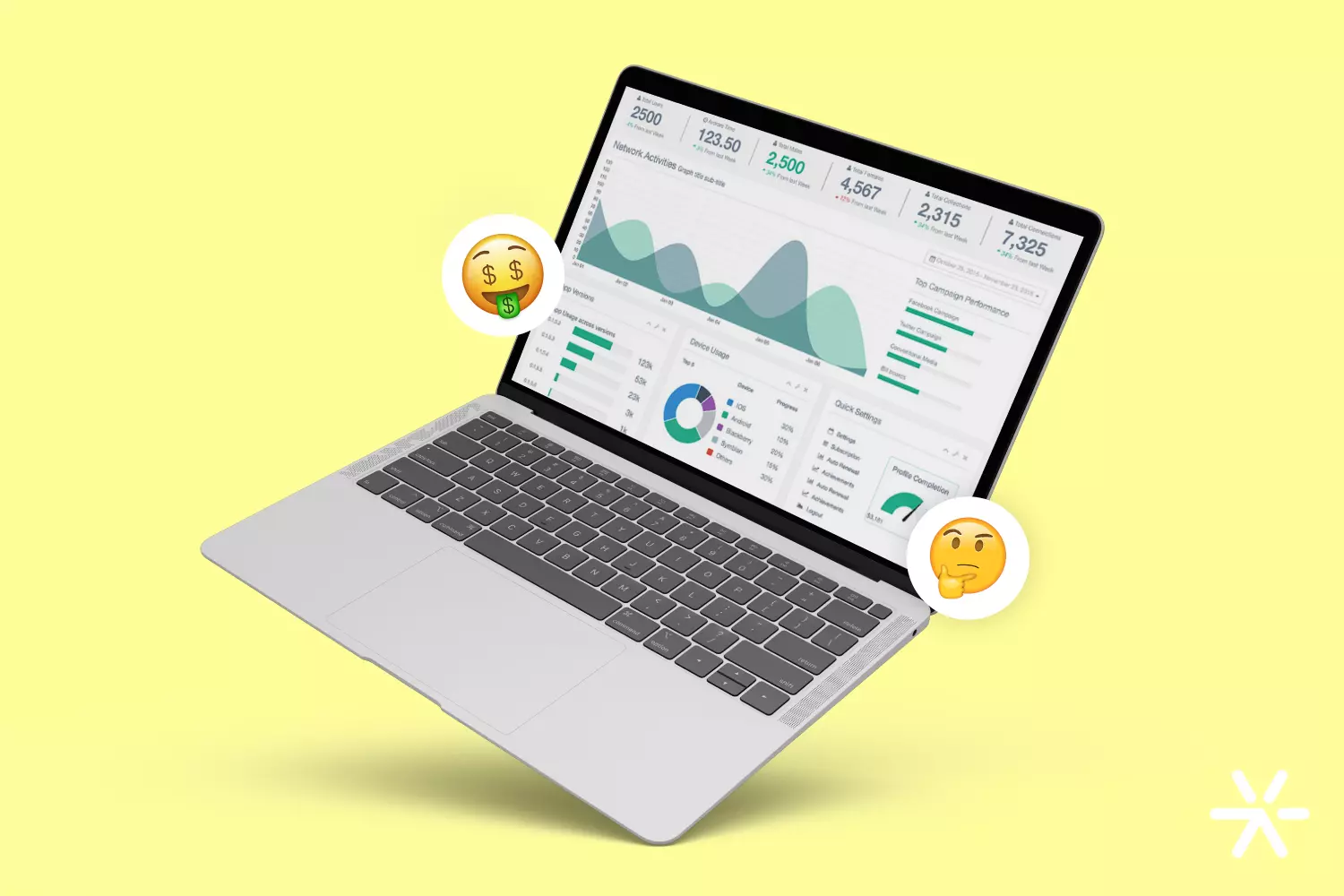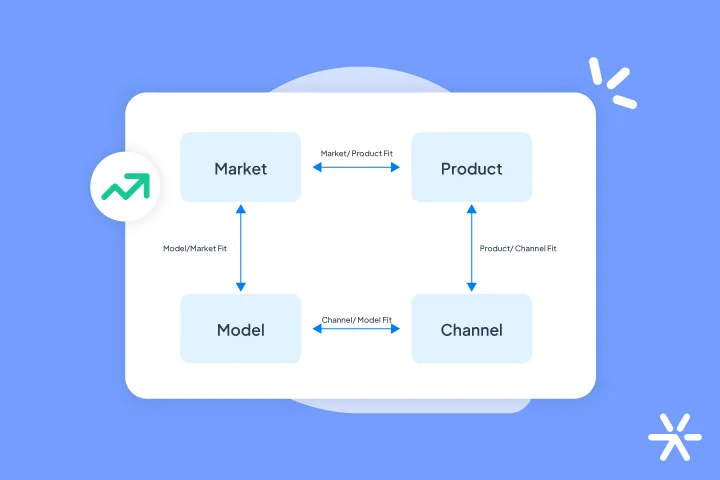Sales Analysis: Step by Step Guide
Creating a sales analysis isn’t always a simple task.
That’s why, in this article, you’ll clear up all your doubts on the subject, discover the types of analysis available, understand the importance of this resource, and learn the necessary methods to execute it correctly.
By the end, you’ll be able to create your sales analysis with efficiency and practicality.
What is sales analysis?

Sales analysis is the process of studying, understanding, and strategically analyzing the commercial results obtained by a company.
This type of process considers the previously set objectives, the efforts and investments made, and the financial returns within a specific period.
Why conduct a sales analysis?
Sales analysis enables you to identify areas for improvement and understand which investments yielded the best returns for the company.
Additionally, you’ll benefit from several other advantages:
Generates visibility and transparency
Without tracking data and metrics, the company operates in the dark.
A sales analysis provides visibility into investments and results and ensures transparency in the monitored processes.
Creates understanding of consumers
With the analyses conducted, the company gains a new perspective on consumer behavior, needs, and preferences.
Thus, it stops relying on assumptions, and results improve: for consumers, who now have a company focused on what they need, and for the company, which benefits in sales and financial results.
Builds a vision of the future
Besides analyzing past data, analyses also enable better forecasting for the next commercial cycle.
There are even specific types of analysis for this, which we will discuss shortly.
Improves team performance
The information obtained through studies is extremely beneficial for the sales team, as it also starts to focus on what really matters.
With better results, team motivation and engagement also increase.
Optimizes marketing actions
Sales analyses not only serve to optimize and direct the efforts of the department itself.
They also support marketing actions, as we can identify those that brought the best results.
The identified trends and forecasts should also be shared, so the marketing team can leverage these opportunities to generate more leads for the sales team.
Increases sales volume
By understanding the key areas of focus, opportunities for improvement, and the analysis of efforts that yield the best results, the company can boost sales numbers.
To achieve this, it’s essential to use these analyses in decision-making and budget distribution, for example.
Improves business ROI
ROI is one of the most important metrics for the company and deserves constant attention and monitoring.
This is because ROI calculates how much money the company gains or loses from investments made.
With the analysis and the actions and decisions derived from it, Return on Investment improves, as the company starts investing where the results are truly found.
Provides a better experience
Since sales analysis helps understand the needs and behavior of the brand’s consumers, it also allows for the creation of actions that enhance the experience between the client and the brand.
Enables the evaluation of provided services
In sales analysis, you can include the analysis of customer service, both in pre-sales and sales approaches, as well as post-sales.
These data will also provide important insights to improve the customer experience, thereby improving sales results.

What are the types of sales analysis?
There are six most commonly used types of sales analysis.
They are:
Descriptive analysis
This type of analysis is based on data collected over time and from different information sources.
Some examples include sales reports, performance evaluations, and the application of sales metrics.
With descriptive analysis, the company can assess its history and improve future strategies with data-driven decisions.
Predictive analysis
Predictive analysis is also widely explored in sales, aiming to find predictability for the next period, based on historical data.
For example, it can be used to identify the percentage growth in sales during seasonal periods or times when sales decrease.
The goal of this type of analysis is to identify and enhance trends, causes, probabilities, and opportunities.
Prescriptive analysis
Prescriptive analysis is often combined with predictive analysis.
The goal of this method is to prescribe recommendations for the next steps and the upcoming work period.
Prescriptive analysis includes planning and sales projections.
Diagnostic analysis
Diagnostic analysis is similar to descriptive analysis, as it also relies on data analysis.
The difference lies in the objective of the diagnostic analysis.
This analysis aims to identify and establish cause-and-effect relationships in the results obtained, whether positive or negative.
Trend analysis
Trend analysis also seeks to find patterns in sales data that can help the strategic team make predictions for the next period.
It is widely applied when a company offers different types of products or services, to understand if and which solutions stand out at certain times.
Trend analysis can also monitor and use market data.
Performance analysis
Sales analysis can also focus on performance, analyzing data to verify how the commercial results of the company as a whole are performing, as well as the performance of specific teams and professionals.
How to conduct a sales analysis?

Learn now how to create your sales analysis.
Follow our step-by-step guide:
Define your objectives
The first step in any analysis is defining objectives and goals.
And sales analysis is no different. Ideally, this objective-setting is done with each new analysis, aiming for the next period.
This way, when the time for analysis comes, you’ll work with the projections that were previously made.
We recommend setting short, medium, and long-term goals.
This will also assist in sales planning and strategy, choosing channels and efforts, and budget distribution.
Read also: Key Growth Strategies to Implement in Your Company
Decide on the metrics for analysis
The second step is to define which metrics and variables will be used to monitor results.
Remember that the goal is always to track progress against the set objectives, and for this reason, the metrics must be aligned with these results.
Avoid vanity metrics and focus on indicators such as conversion rate, ROI, CAC, and average ticket.
Use tools to measure results
Using tools in result analysis can automate data collection, gather information in one place, and even help understand the results more strategically.
Therefore, investing in sales data tools is a great suggestion to make your analysis even more robust, practical, and professional.
Choose the data visualization and presentation format
The visual aspect of data analysis influences its understanding, whether in routine monitoring or in presenting these numbers.
Use performance and results charts
How about enhancing your analysis with the use of charts and dashboards, in addition to the more traditional spreadsheets?
This way, trends, patterns, and key areas of focus will stand out.
With our tips, your sales analysis will be much more complete and will guide your decisions to achieve even better results!








